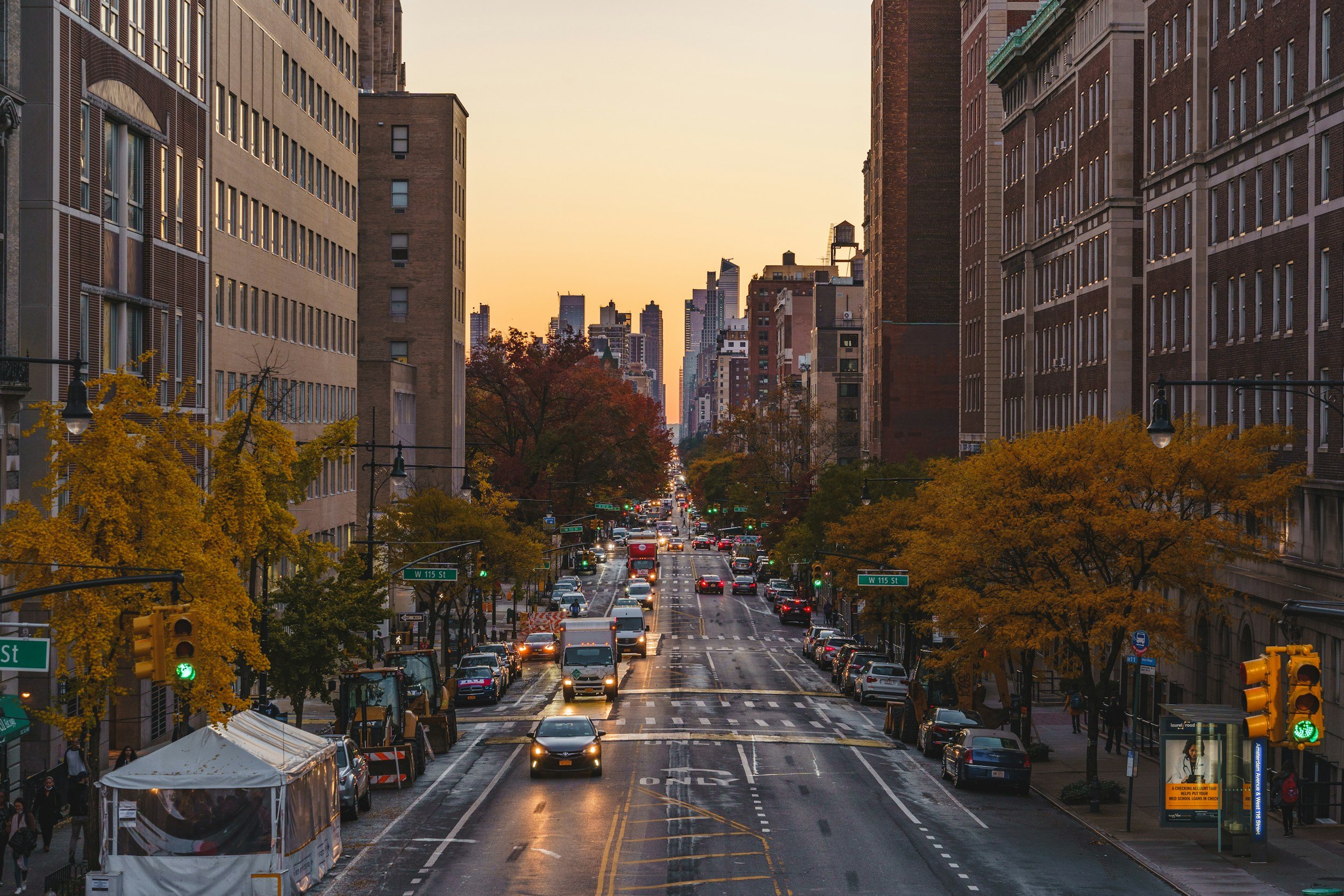
Policing Now, Gentrification Later?
Aggressive policing has hidden costs. This study provides some of the first empirical evidence that intensified policing can lead to gentrification. Our findings challenge conventional wisdom about the causes of neighborhood change and offer a crucial lens to understand how law enforcement policies shape the places we live—sometimes subtly, sometimes dramatically.
As cities confront issues of inequality, racial justice, and housing displacement, studies like this reveal why rethinking public safety is not just about crime—it's about who has the right to belong in a neighborhood.

The Local Politics of Public Health
In this two-part miniseries, UAR Remixed speaks with several authors from the journal’s recent symposium, “The Intrinsic Relationship between Local Politics and Public Health.” We speak with the authors about their research, which covers a wide breadth of topics and ideas at the intersection of public health and politics in local contexts. In Part 1, we meet the authors and learn more about the big questions and pressing issues that prompted them to do this research. In Part 2, we’ll be thinking about the inherently political nature of public health policy, and how our present political climate is affecting public health research and institutions at the local level.

The Pernicious Effects of Uncertainty on Municipal Climate Action
Cities are well positioned to test policies designed to address climate change that could be implemented more expansively at higher levels. And many city officials are enthusiastic about leveraging local governmental powers to reduce greenhouse gases and prepare their cities for climate impacts. Cities like Washington, DC, for example, have implemented innovative decarbonization policies such as building performance standards designed to ramp down emissions from large buildings; others, like Boston, have created municipal heat resilience plans that seek to adapt local infrastructure and services for increased temperatures.

Resident (Non)Participation in Croatian Housing Estates
In many cities around the world, there’s a growing concern: people aren’t participating in decisions that affect their everyday lives. Whether it's fixing a local park, building new roads, or improving public services, citizens are often missing from the conversation. Our recent study looked at four Croatian cities (Zagreb, Split, Rijeka and Osijek) to understand why this is happening. The findings were striking but not surprising: most people feel left out, unheard, and unsure of how to get involved.

Challenges to Equitable and Effective Land Value Capture
Scholars and practitioners argue that local governments should capture rising land values to fund services and infrastructure, especially when the value results from public and collective action. Yet land value capture mechanisms are technically and politically challenging to implement. In this paper, we examine the four most prevalent land value capture mechanisms: (i) property and land taxes, (ii) real estate transfer taxes, (iii) betterment levies, and (iv) development charges. We propose a conceptual framework with seven design features to describe and compare the mechanisms, both across mechanisms within the same city and for a single mechanism across different contexts. Our analysis shows the superiority of property taxes as a tool for land value capture, and how contemporary scholarship advocating for development charges fails to recognize their drawbacks.

Crime, Policing, and Voter Turnout
Politicians love to talk about crime in their election campaigns. The conventional wisdom is that tough-on-crime solutions will bring out the vote. Chicago’s recent mayoral elections showed this perfectly, when several candidates promised to reduce crime through increased policing. Yet researchers disagree about how crime and policing are connected to voter turnout. We analyze data from Chicago’s last two mayoral elections to clarify.

What’s in it for the big ones?
In urban governance, collaboration between municipalities is a common strategy to produce and provide services. However, the motivations behind such collaborations can vary significantly between city and suburban municipalities. Our recent study explores these differing motivations and explains why larger municipalities engage in intermunicipal cooperation (IMC) despite having the resources to operate independently.

Neighborhood Ambiguities
The political traditions used to secure elected office are embedded in the culture of many neighborhoods. These traditions include politicians, community leaders, and prospective candidates working together to help neighborhood organizations provide services to the residents of the community. These traditions and practices include joining a political club to support party initiatives and help the candidates endorsed by the club win election; attending neighborhood churches to share resources with influential clergy members the community depends on; and attending block parties, street fairs and traditional community festivities. These are shared strategies elected officials have used to secure and maintain elected office. For generations, African American churches have influenced United States politics and social activism and play a crucial role in large scale cultural change.

Locals, Newcomers, and Longtimers
Commercial gentrification, or upscaling of businesses in an area, has displaced long-standing and working-class residents and businesses in communities across the U.S. In communities of color, the drivers of commercial gentrification have become associated with wealthier, white, and new business owners with no prior connection to the areas they are gentrifying. The commercial gentrification of communities of color threatens to disrupt the local cultural fabric and residents’ ability to connect to their heritage through products sold and services offered in their native language. In our paper, we offer an alternative perspective on the drivers of commercial gentrification by looking at Latinx business owners participating in a new form of redevelopment coined gentefication.

New Faces, Changing Spaces
The relationship between gentrification and policing is not new. Prior research has demonstrated increased policing in gentrifying neighborhoods, at times, driven by citizen demand. But data constraints have limited the ability to determine the source and characteristics of citizen calls to the police. Moreover, there are many important debates around what explains this increased demand. Conventional wisdom argues that increased demand by gentrifiers is simply a response to their exposure to greater crime when moving into previously disinvested spaces. However, substantial qualitative evidence finds that this demand is often a response by gentrifiers’ to perceived disorder in their new neighborhoods, and in particular, privileged whites’ response to more ethno-racial diversity within neighborhoods. My article evaluates these explanations and more broadly, the nature of demand for policing in gentrifying contexts in order to understand how privileged citizens wield power in gentrifying areas and how this shapes their interactions with local government.

Security is on the upswing; who should get the credit?
Every three months, the Mexican National Statistics Institute (INEGI) publishes information on public safety perceptions for Mexico’s 96 most populated cities. About three years ago, in July 2022, right after INEGI published this data, the former Mexico City head of government and now president Claudia Sheinbaum, turned to Twitter to share some great news. She tweeted that perceptions of public safety continued to improve in the city thanks to her public safety and policing strategies. Several hours later, borough mayor Santiago Taboada made a similar claim (for context, Mexico City is divided into sixteen boroughs, each with its elected borough mayor). Taboada tweeted that residents of his borough ranked it as one of the safest in the country thanks to his policing model, which he called Blindar BJ or Protect Benito Juarez. For those familiar with Mexico City, Taboada’s tweet does not really make sense and is somewhat puzzling, given that security in the city is provided by the Mexico City police, an entity that was then accountable to Sheinbaum.

Local self-government against the state
The re-election of Donald Trump worries many people about the condition of democracy in the US. How much pressure from executive power can the country withstand? Yet with America’s rightward turn, authoritarianism is less an exception than a rule in the Global North. In Austria, the Freedom Party won the elections in 2024. The Netherlands had a similar outcome in 2023, with Geert Wilders’ success, and Italy has been governed by Brothers of Italy since 2022. The rightward turn in the West was initially taken in eastern Europe in the 2010s, where the Right rose to power in Hungary, Poland, recently joined by Slovakia.

On Their Own Terms
Informal settlements are urban communities where most people build homes and live without formal approval from government authorities. Residents in these communities often lack access to basic infrastructure and services such as clean water, proper sanitation and electricity. At the same time, they face a constant struggle for inclusion in urban governance and decision-making processes. To address some of these challenges, governments, policymakers and urban planners promote participatory mechanisms – community meetings, local councils, and consultations – as tools to ensure that marginalized communities have a say in shaping their neighborhoods. But do these mechanisms genuinely lead to meaningful inclusion, or are they just tokenistic gestures? This question inspired us to conduct a study in Nima and Old Fadama, Accra’s largest informal settlements.

Neo-Progressivism and Urban Politics in the Ongoing Interregnum
Over the past decade, neo-progressive candidates have been elected to lead several major cities across Europe and the United States: the mayors of change in Spain (2015-2019), the Green mayors in France (2020), as well as leaders in Athens, Berlin, Naples, Preston, and Zagreb. These politicians share a common agenda: rejecting urban austerity policies, promoting more democratic governance, ensuring fair access to public services, fighting against social inequalities and advancing ecological resilience. This shift is particularly significant, as urban governance had been dominated by the neoliberal paradigm since the 1980s, emphasizing economic competitiveness, territorial attractiveness, and budgetary discipline.

Cities and Their Neighbors
Kenosha County, Wisconsin held the state's only contested race for District Attorney last year. The community's recent history of protest and violence resurfaced in the campaign as the Republican candidate had once represented a bail fund for Kyle Rittenhouse, a white teenager who shot and killed two local protesters. In the end, Republican Xavier Solis secured a narrow victory (51% - 49%) over Democrat Carli McNeil. However, this overall result obscures deep divisions within Kenosha County. Solis won just 43% in the city of Kenosha—the largest, most diverse city in the county and the site of the recent protests—he averaged 63% of the vote in the much smaller, whiter, and more rural communities in the rest of the county.

The Economic Background of City Councilmembers
Who are city councilmembers? One image might resemble a national politician — someone with strong partisan attachments, perhaps a lawyer by trade, who runs for office with ambitious policy goals. Alternatively, we might picture a local community member — someone well-known in their neighborhood, running for the part-time role not as a steppingstone to higher office, but to serve their community. Perhaps council is simply a natural next step in their career path. They might be elected because Republicans and Democrats alike trust their understanding of local issues and their commitment to schools and public safety.

Bargaining for Benefits
Over the last 25 years, community benefits agreements (CBAs) have become a means for residents of low-income communities to demand a greater share of the benefits of urban development projects. CBAs are bargaining agreements that are signed by a developer that commit to delivering a range of material benefits to affected residents in exchange for community support for the proposed project. Much scholarly and broader public attention has been focused on how unequal developer-resident negotiating conditions undermine their responsiveness to community concerns. Rather than focusing on the fairness of the negotiation process, this paper focuses on how effectively CBAs are implemented throughout the duration of the agreement.

Green Dreams, Concrete Realities
With the coming of a second Trump administration, local action on climate change will be vital for making progress towards both mitigation and adaptation goals. One under-appreciated potential engine for this progress are mid-sized U.S. cities, which fall between the large cities (New York, LA), whose climate plans dominate the news and the small rural communities that are the focus of much of existing research on the green transition. Over the last two years, I’ve focused on the factors that shape climate policy outcomes in mid-sized cities and what they can teach us about local climate policy more broadly.


Citizens Become 'Avengers' to Reclaim Lost Public Spaces
We have discovered the potential for citizens to reclaim public spaces lost to private interests. Privately owned public spaces (POPS) are intended for public use but are owned and maintained by private building owners. In exchange for providing POPS, developers receive floor area bonuses and other regulatory benefits. However, many property owners and managers illegally hinder public access to POPS through hostile architecture, restrict amenities, misuse them for parking or waste disposal, and even profit by illegally operating restaurants or cafeterias. These issues are common in cities like Seoul and New York City.